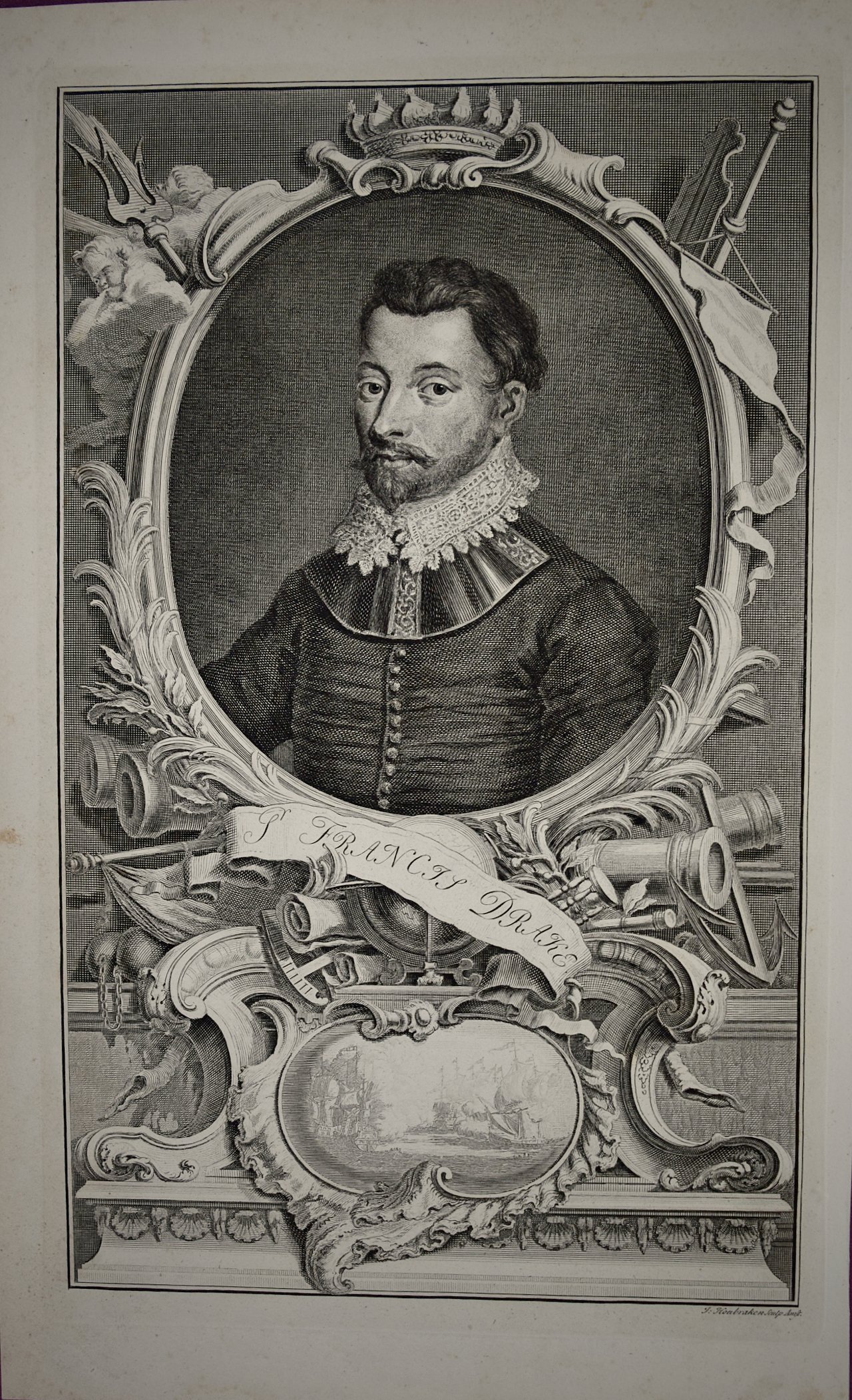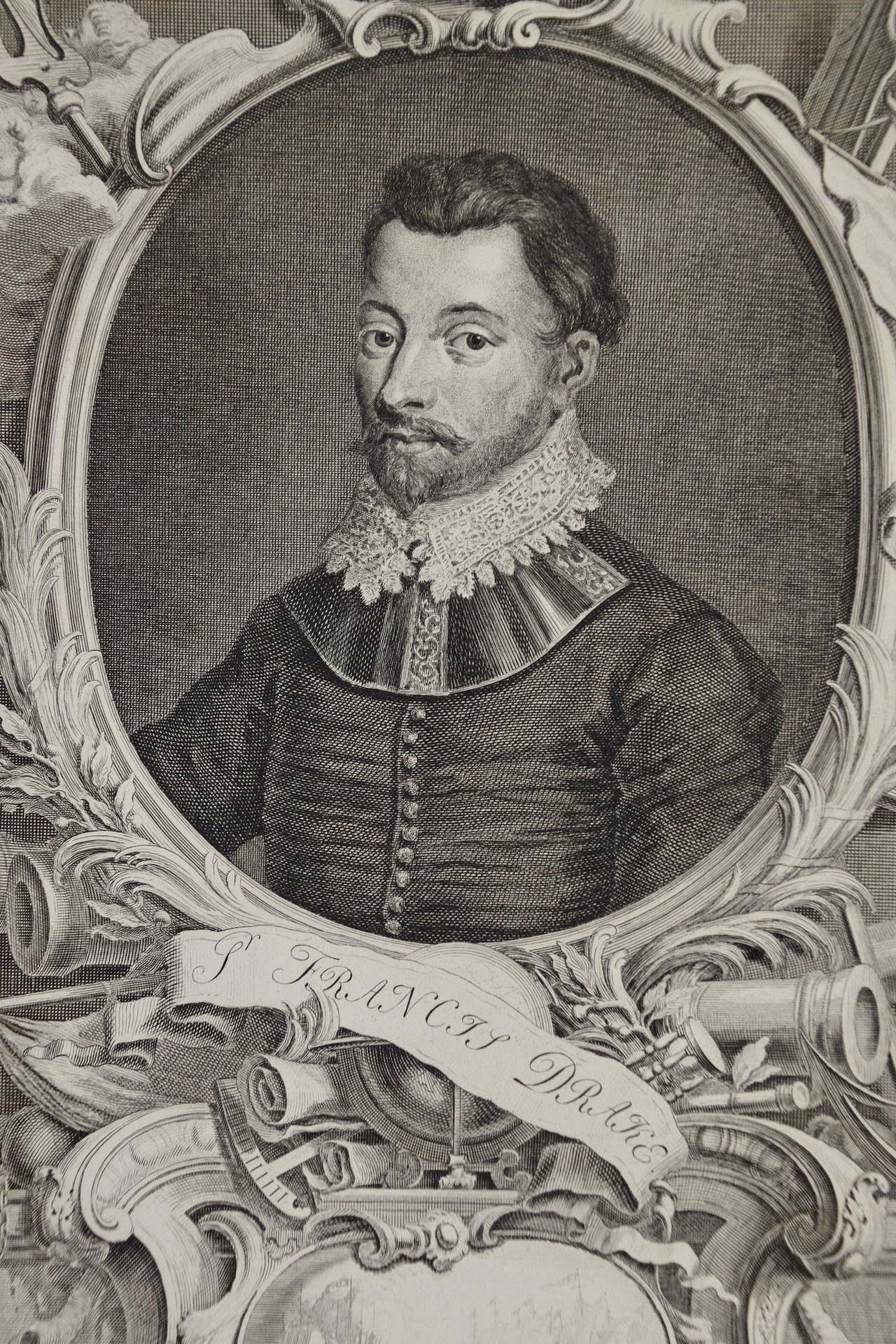Tshusick, Ojibway Woman: Original Folio Hand-colored McKenney & Hall Lithograph
This is an original 19th century hand-colored folio-sized McKenney and Hall lithograph of a Native American entitled "Tshusick, An Ojibway Woman", lithographed by J. T. Bowen after a painting by Charles Bird King and published by E. C. Biddle in Philadelphia in 1837. Tshusick's portrait depicts her in traditional Ojibway clothing, with a fringed and beaded dress and moccasins. She wears a beaded necklace, a peace medal on a ribbon and her long hair is braided. Tshusick's expression is stoic and contemplative, and she gazes slightly downward and to her right with piercing eyes. Her name is written in cursive on a paper, which lies under her left arm, which is resting on a table. Tshusick was a very interesting and accomplished Native American woman. She was fluent in French, knew appropriate society etiquette, and she was a skilled seamstress. She traveled to Washington DC where she charmed DC society, soon becoming a social companion of First Lady Louisa Adams.
Creator: McKenney & Hall
Creation Year: 1837
Dimensions: Height: 19.25 in (48.9 cm)
Width: 14 in (35.56 cm)
Medium: Lithograph
Condition: See description below.
This is an original 19th century hand-colored folio-sized McKenney and Hall lithograph of a Native American entitled "Tshusick, An Ojibway Woman", lithographed by J. T. Bowen after a painting by Charles Bird King and published by E. C. Biddle in Philadelphia in 1837. Tshusick's portrait depicts her in traditional Ojibway clothing, with a fringed and beaded dress and moccasins. She wears a beaded necklace, a peace medal on a ribbon and her long hair is braided. Tshusick's expression is stoic and contemplative, and she gazes slightly downward and to her right with piercing eyes. Her name is written in cursive on a paper, which lies under her left arm, which is resting on a table. Tshusick was a very interesting and accomplished Native American woman. She was fluent in French, knew appropriate society etiquette, and she was a skilled seamstress. She traveled to Washington DC where she charmed DC society, soon becoming a social companion of First Lady Louisa Adams.
Creator: McKenney & Hall
Creation Year: 1837
Dimensions: Height: 19.25 in (48.9 cm)
Width: 14 in (35.56 cm)
Medium: Lithograph
Condition: See description below.
This is an original 19th century hand-colored folio-sized McKenney and Hall lithograph of a Native American entitled "Tshusick, An Ojibway Woman", lithographed by J. T. Bowen after a painting by Charles Bird King and published by E. C. Biddle in Philadelphia in 1837. Tshusick's portrait depicts her in traditional Ojibway clothing, with a fringed and beaded dress and moccasins. She wears a beaded necklace, a peace medal on a ribbon and her long hair is braided. Tshusick's expression is stoic and contemplative, and she gazes slightly downward and to her right with piercing eyes. Her name is written in cursive on a paper, which lies under her left arm, which is resting on a table. Tshusick was a very interesting and accomplished Native American woman. She was fluent in French, knew appropriate society etiquette, and she was a skilled seamstress. She traveled to Washington DC where she charmed DC society, soon becoming a social companion of First Lady Louisa Adams.
Creator: McKenney & Hall
Creation Year: 1837
Dimensions: Height: 19.25 in (48.9 cm)
Width: 14 in (35.56 cm)
Medium: Lithograph
Condition: See description below.
This original McKenney and Hall folio-sized beautifully hand-colored lithograph is printed on a sheet measuring 19.25" high and 14" wide. In the photo there appears to be discoloration over Tshusick's eyes, but this is actually just a reflection off the beautiful metallic paint used to hand color her image. That is not the appearance when viewing the lithograph head on. There is some discoloration along the right edge of the sheet, where the print was originally bound. There are small faint spots in the margins and some text offset. The print is otherwise in very good condition. The original biographical text pages, 173-179, from McKenney & Hall's 19th century publication are included. They can be mounted in a mylar sleeve on the back of a frame for preservation.
Col. Thomas J. McKenney was Superintendant of The Bureau of Indian Affairs from 1816 until 1830. He was one of a very few government officials to defend American Indian interests and attempt to preserve their culture. He travelled to Indian lands meeting the Native American leaders. He brought with him an accomplished artist, James Otto Lewis, who sketched those willing to participate. A large number of the most influential Indian chiefs and warriors were later invited to come to Washington in 1821 to meet President Monroe. McKenney commissioned the prominent portrait painter Charles Bird King, who had a studio in the capital, to paint these native American leaders, who chose the costumes they wished to wear for the sitting. The magnificent resultant paintings were displayed in the War Department until 1858, and were then moved to the Smithsonian Institute. When Andrew Jackson dismissed McKenney in 1830, he gave him permission to have the King portraits as well as some by other artists, including George Catlin and James Otto Lewis, copied and made into lithographs, in both folio and octavo sizes. McKenney partnered with James C. Hall, a Cincinnati judge and novelist to publish the lithographs and the text written by Hall. The work was extremely expensive to create and nearly bankrupted McKenney, as well as the two printing firms who invested in its publication. The resultant work gained importance when Catlin's paintings were destroyed in a warehouse fire and Charles Bird King's and James Otto Lewis’ portraits were destroyed in the great Smithsonian Museum fire of 1865. The McKenney and Hall portraits remain the most complete and colorful record of these pre-Civil War Native American leaders. The McKenney and Hall lithographs were intended to serve as a record of the diverse cultures and traditions of Native American tribes in the United States.
The larger folio-sized and smaller octavo-sized hand painted lithographs remain prized by collectors and institutions, many of which are held by major museums, including the Library of Congress and the Smithsonian Institute.



























